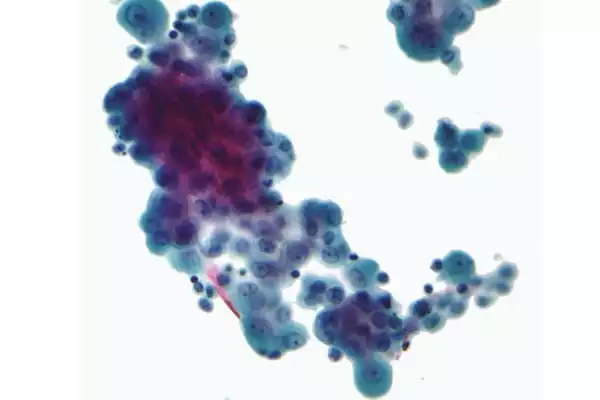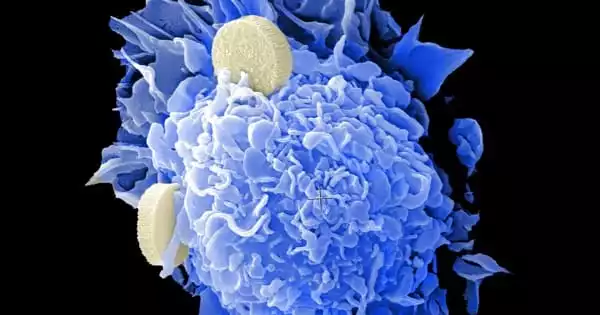Mesothelioma is a kind of cancer that arises from the thin layer of tissue that protects several internal organs (known as the mesothelium). The lining of the lungs and the chest wall are the most commonly affected areas. Less typically, the lining of the abdomen and, in rare cases, the sac containing the heart or the sac enclosing the testis may be impacted. Shortness of breath owing to fluid surrounding the lung, a swollen belly, chest wall pain, coughing, feeling exhausted, and weight loss are all signs and symptoms of mesothelioma. These symptoms often appear gradually.
Researchers at the University of Colorado Anschutz Medical Campus and its worldwide collaborators discovered that a protein crucial in the embryonic stages of life is reactivated in certain cases of mesothelioma, providing insight into the origins of this deadly malignancy. Nature Communications reported the findings of the study.
“We discovered that in numerous mesothelioma tumors, the Hand2 protein has been turned back on, possibly altering the cells of the tumor,” said Christian Mosimann, PhD, lead author of the study and associate professor of pediatrics in the section of developmental biology at the University of Colorado School of Medicine on the CU Anschutz Medical Campus. “We’re now looking into what causes this and what distinguishes such mesothelioma tumors from tumors that don’t have Hand2.”
We discovered that in numerous mesothelioma tumors, the Hand2 protein has been turned back on, possibly altering the cells of the tumor. We’re now looking into what causes this and what distinguishes such mesothelioma tumors from tumors that don’t have Hand2.
Christian Mosimann
Mesothelioma is a deadly cancer that develops in the mesothelium, a thin layer of tissue that protects most internal organs. The primary cause is asbestos exposure. Mosimann explained that the Hand2 protein connects to genes at the start of life to control them during cellular development. After an embryo fully develops, it normally goes dormant in numerous tissues. The discovery that the protein reactivates in some cases of mesothelioma opens up the possibility of manipulating it to alter the disease’s progression.
Mosimann and his colleagues are studying how different cell types originate using zebrafish since their translucent nature allows them to examine the full course of cell development quickly due to the fish’s rapid growth. They focused on the mesothelium, a membrane that develops in the embryonic stage and covers the heart, abdomen, intestines, and interior organs such as the lungs in humans. Mosimann compared the mesothelium to a protective shrink wrap that wraps around the inner organs.

The research team discovered that the Hand2 protein aids in the establishment of the embryonic mesothelium. The researchers subsequently discovered that adult mesothelioma tumors can reactivate Hand2, perhaps allowing these cells to expand and migrate like they did in the embryo.
Medical practitioners have been baffled by mesothelioma tumors, which can arise decades after asbestos exposure. This requires complicated therapy, and the prognosis is usually deadly within a year after diagnosis.
“What has become clear through time is that the dust produced by asbestos is hazardous because it is made of a substance that the body cannot break down. It has the potential to remain in your system and become trapped in important organs such as the lungs or heart “Mosimann explained.
Asbestos is a mineral that can be found in a variety of building and mining situations. According to Mosimann, several countries still use asbestos in building materials, making mesothelioma a global health hazard. “Mesothelioma tumors continue to be a particular worry in Colorado due to all of the years of mining and construction activity that have occurred in the state,” he said.
Mosimann’s team will now investigate whether they may regulate the Hand2 protein, resulting in better therapies and therapeutic effects in select cases of mesothelioma without interfering with other cellular activities. They will also investigate why Hand2 is not involved in all cancer situations.
Mosimann and his colleagues seek to get new insights not only into mesothelioma tumors, but also into the origins of congenital abnormalities with the mesothelium when an embryo initially develops, by continuing to study zebrafish and utilizing them to understand where cells come from and what makes them tick.
“This could potentially lead to better diagnosis and treatment for children born with problems such as congenital hernia and heart disease,” he said.





